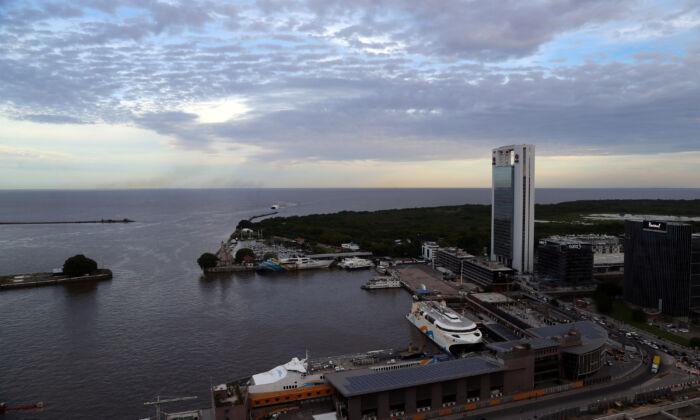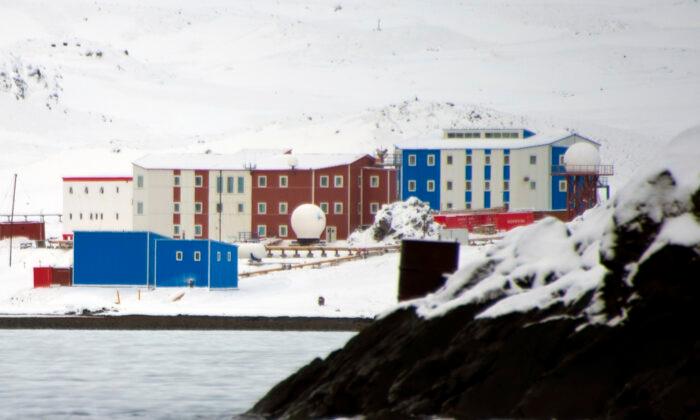It would appear that Russia’s decades-long investment in strategic mechanized airborne forces has died in the battles over the Hostomel/Antonov airport near Kyiv, which has major implications for the Airborne Corps of China’s People’s Liberation Army Air Force (PLAAF).
In the early hours of Russia’s invasion of Ukraine on Feb. 4, 300 elite assault troopers in about 30 helicopters, from the Vozdushno-desantnye voyska Rossii (VDV), or Russian Airborne Forces, attempted to capture the Hostomel or Antonov Airport near the capital city of Kyiv.
By capturing this large airport, the Russian Army hoped to pour in large Ilyushin Il-76 transport aircraft ferrying more troops and light armored vehicles to achieve an immediate strategic and psychological victory by “decapitating” the Ukrainian government and capturing its capital.
However, at Hostomel, poor leadership resulted in the decision to strike with Airborne Special Forces troops that did not have specialized lightweight armor vehicles. This was compounded by the loss of helicopters and a failure to quickly reinforce the VDV’s “bridgehead” with heavier armored units.
Attacked by the 4th Rapid Response Brigade of the Ukrainian National Guard, and by BM-21 artillery rockets, the overwhelmed VDV troops fled.
This early victory provided a major psychological boost to the Ukrainian defenders and demonstrated to the world that Russia’s massive forces were not invincible. It also encouraged most European capitals, even the perennially neutral Germans, to begin making new commitments of political and military material support for the Ukrainians.
They did not get far. According to Ukrainian government sources, 50 VDV troops died in two days of fighting just a few blocks into the adjacent town of Bucha, where 20 of their vehicles were destroyed by Ukrainian defenders.
Videos of the March 3 battle posted on Ukrainian websites showed many destroyed and burning specialized VDV lightweight assault vehicles, like the BMD-2, a 30mm cannon armed infantry fighting vehicle that can carry six armed troops and at 8 tons can be dropped out of an Il-76 heavy transport aircraft.
Images of many other destroyed BMD-2 vehicles demonstrate the utter uselessness of its aluminum armor against modern soldier-launched guided anti-tank weapons, like the American FGM-148 Javelin with a deadly tandem warhead, or the Swedish-British NLAW of which Britain gave 2,000 to Ukraine.

Fighting in Bucha saw the Ukrainians also dispatch the newer 13.6-ton BMD-4A armed with a 100 millimeter anti-tank missile launching gun. Other images show abandoned BTR-MDM dedicated troop carriers that are based on the chassis of the BMD-4A.
While much of the poor performance of the VDV in Ukraine is due to parlous leadership, the failure of its lightweight vehicles is likely a shock to the People’s Liberation Army (PLA).
Since the late 1990s, the PLA has used Russian instruction, training, and technology to build its Airborne Forces as a light, mechanized force capable of strategic missions.
As was the Russian intent, the PLA hopes that it can capture civilian and military airfields near Taiwan’s capital city of Taipei in order to “decapitate” its national leadership and produce a rapid conquest of the democratic island nation.
In order to pacify Taiwan, the PLA needs to transport millions of troops and occupation forces, meaning, the capture of airports is essential to China’s success.
By 2004, PLA Airborne units were being equipped with the 8-ton air-droppable ZBD-04, an aluminum armored and 30mm cannon armed infantry fighting vehicle patterned after the BMD-2, which the PLA did not want to purchase.
But at the 2018 Zhuhai Airshow, the PLA revealed both a new 100mm gun armed version of the ZBD-04, and that it had developed an air-droppable six-wheel small truck capable of firing 107mm artillery rockets. This truck may soon also be armed with a 122mm artillery system and the long range HJ-10 guided anti-armor missile.
The show also revealed the Norinco VN-3, a 5- to 6-ton four-wheeled, 30mm cannon armed, very lightweight infantry fighting vehicle, which can be expected to be produced in several versions.
The PLA Ground Force has also invested heavily in helicopter-borne Air Assault brigades and has developed a family of six- and eight-wheeled 1- to 2-ton all-terrain vehicles (ATVs), transportable by helicopter.
The Norinco Lynx family of ATV fighting vehicles, versions of which can be armed with heavy machine guns, 107mm artillery rockets, and 82mm or 120mm mortars, turn heliborne forces into very lightweight, mechanized units.
But Norinco’s ATV fighting vehicles lack armor protection for their crew, and the larger VN-3 and ZBD-04 vehicles also feature lightweight armor that is highly vulnerable to modern U.S. and Western guided anti-tank missiles.
According to open-source reports, Taiwan may have purchased about 1,000 Javelin anti-tank missiles that would be deadly to PLA Airborne and Air Assault brigade mechanized forces.
Taiwan is building its own lighter, soldier-launched anti-armor weapons, but likely requires many thousands more of these, and missiles like Javelin, to put the fear of a Ukraine-like disaster into the PLA Airborne Corps and Air Assault units.
It is also likely that following the Russian VDV failures in Ukraine, the PLA Airborne Corps will be investing heavily in active protection system countermeasures to defend against anti-tank missiles.
The PLA may also transport larger numbers of its heavier 30-ton medium-weight combat vehicles to support its airborne forces, which already equip many PLA Ground Force medium-weight brigades.
But for now, the PLA appears to be ignoring the bad news from Ukraine.
On March 2, a show about military issues on Chinese state television ran a segment showing lightly armed Airborne Corps troops conducting a night jump from their relatively new Xian Y-20 heavy transport aircraft—even in Ukraine, similar Russian airborne forces have already met repeated disaster.





